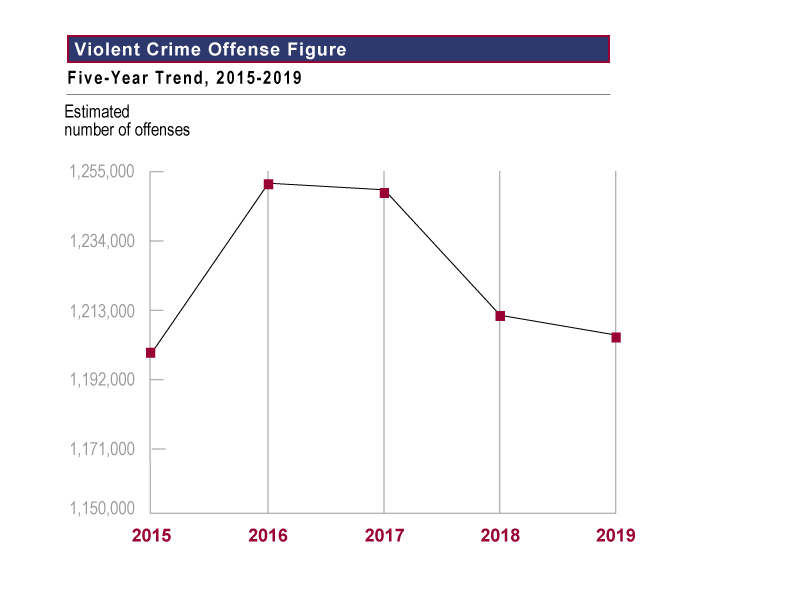Violent Crime
Definition
In the FBI’s Uniform Crime Reporting (UCR) Program, violent crime is composed of four offenses: murder and nonnegligent manslaughter, rape, robbery, and aggravated assault. Violent crimes are defined in the UCR Program as those offenses that involve force or threat of force.
Data collection
The data presented in Crime in the United States reflect the Hierarchy Rule, which requires that only the most serious offense in a multiple-offense criminal incident be counted. The descending order of UCR violent crimes are murder and nonnegligent manslaughter, rape, robbery, and aggravated assault, followed by the property crimes of burglary, larceny-theft, and motor vehicle theft. Although arson is also a property crime, the Hierarchy Rule does not apply to the offense of arson. In cases in which an arson occurs in conjunction with another violent or property crime, both the arson and the additional crime are reported.
In 2016, the FBI Director approved the recommendation to discontinue reporting of rape data using the UCR legacy definition beginning in 2017. However, to maintain the 20-year trend in Table 1, the rape total for the legacy definition is used to calculate the violent crime total.
Overview
- In 2019, an estimated 1,203,808 violent crimes occurred nationwide, a decrease of 0.5 percent from the 2018 estimate. (See Tables 1 and 1A.)
- When considering 5- and 10-year trends, the 2019 estimated violent crime total was 0.4 percent above the 2015 level but 3.8 percent below the 2010 level. (See Tables 1 and 1A.)
- There were an estimated 366.7 violent crimes per 100,000 inhabitants in 2019, a rate that dropped 1.0 percent when compared with the 2018 estimated violent crime rate and fell 9.3 percent from the 2010 estimate. (See Tables 1 and 1A.)
- Aggravated assaults accounted for 68.2 percent of violent crimes reported to law enforcement in 2019. Robbery offenses accounted for 22.3 percent of violent crime offenses; rape (legacy definition) accounted for 8.2 percent; and murder accounted for 1.4 percent. (Based on Table 1.)
- Information collected regarding types of weapons used in violent crimes showed that firearms were used in 73.7 percent of the nation’s murders, 36.4 percent of robberies, and 27.6 percent of aggravated assaults. (Weapons data are not collected for rape.) (See Expanded Homicide Data Table 7, Robbery Table 3, and the Aggravated Assault Table.)
Violent Crime Figure
This figure is a line graph that presents trends in the estimated number of violent crimes for the nation from 2015 through 2019. In 2015, there were 1,199,310 violent crimes. In 2016, there were 1,250,162 violent crimes. In 2017, there were 1,247,917 violent crimes. In 2018, there were 1,209,997 violent crimes. In 2019, there were 1,203,808 violent crimes. The figure is based on statistics from Table 1.

Murder
Rape
Robbery
Aggravated Assault
Metropolitan Statistical Areas (MSAs) (Table 6)
Expanded Offense Data

